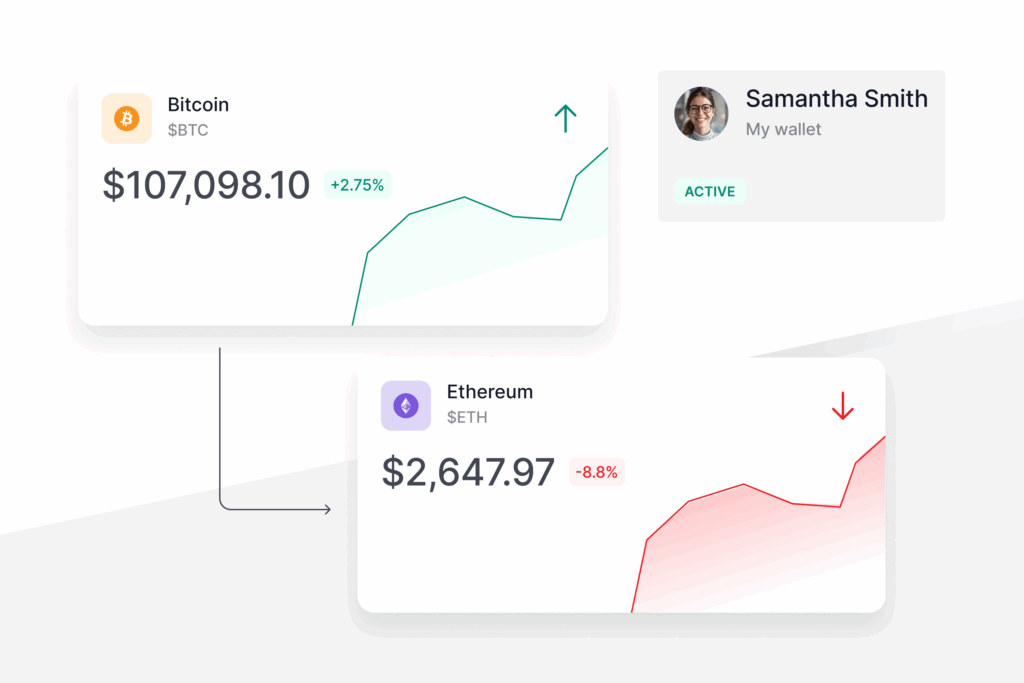
FEATURED ARTICLE
Tax Planning for Realized Gains and Ordinary Income
Tax planning strategies for realized gains and ordinary income

Tax planning strategies for realized gains and ordinary income


QSBS, or the Qualified Small Business Stock Exemption, is one of the best tax breaks available to startup builders, and QSBS stacking can supercharge those benefits. Like most tax planning, though, timing makes all the difference. There are clear cases when it makes sense to take action, but the best approach for most, especially early, is to sit tight.
Your job is to recognize which camp you’re in. Our job is to make that decision easier. The goals of this article are (1) to explain the basics of QSBS stacking, (2) to help you decide when to start planning, and (3) to explain which structures to use when the time is right.
Section 1202 of the Internal Revenue Code, known as the QSBS Exemption, allows startup founders and other early shareholders to earn up to $10 million on the sale of their equity tax free at the federal level (and in most states).*
* Important 2025 Tax Law Update. The QSBS provisions of the tax code underwent major changes this year. For shares issued after July 4, 2025, the individual exemption has increased from $10 million to $15 million. We use the old $10 million number in this article because most people who can benefit from QSBS stacking today will have received their shares under the old rules. The same analysis and strategies, however, apply no matter when you received your shares.
With QSBS stacking, shareholders and their families can benefit from multiple QSBS exemptions. Instead of just one $10 million tax-free sale, you and/or your heirs could sell $30m, $50m, or even $100m+ tax-free.
Stacking multiplies exemptions by gifting QSBS shares to other taxpayers (before a sale) so they can receive their own $10 million exemption. When you gift shares, the receiver (like a specific type of trust) inherits your original holding period and the stock’s QSBS character. This means that the trust doesn’t have to hold the shares for 5 years itself; it can use your holding time to qualify.
To stack your exemptions you must give your shares to another person that isn’t your spouse or, more commonly, to a Non-Grantor Trust (and specifically an NGT, SLANT, or CRT). Because these trusts are treated as a separate taxpayer, they can claim their own exemption if the trust is drafted and administered correctly.
Example. A founder expecting a $40M eligible gain could keep their own $10M exemption and gift the remaining shares to three properly structured non-grantor trusts. Each trust would receive its own $10M exemption, eliminating federal taxes on the entire $40M gain.
Stacking is an incredible deal. The real question, then, is when to start and which structures to use. For most founders, the “when” is the far more important – and dangerous – question. So let’s break that down first.
Is it the right timing for you to think about QSBS Stacking?
QSBS stacking sounds great – and it is! But timing is everything. Startup builders often begin hearing from vendors after an early fundraising round, and the common line is that the founder needs to set up trusts and gift their equity now. But this urgency is often misplaced and can be harmful.
The same ingredients that make stacking powerful also make premature stacking risky. Here are the three main traps to avoid.
Founders are often told to rush their planning and gift shares before they are “too valuable” and trigger gift and estate tax.
For almost all founders, this is a red herring. First, as former Goldman Sachs President Gary Cohn famously (and provocatively) put it, “Only morons pay the estate tax.” Americans for Tax Fairness, a group that advocates for more progressive tax policies, was more tactful: “Payment of estate, gift and generation-skipping taxes (collectively known as wealth-transfer taxes) have become for all practical purposes optional for the ultrawealthy.” Why is this so? There is an alphabet soup of structures (NGTs, IDGTs, GRATs, Crummey Trusts, ILITs, and more) that remain available even after your estate has ballooned. These strategies can be used to avoid the estate tax later, when you actually have the problem. (Our proprietary modeling demonstrates that an effective estate tax plan can move as much as $10 billion out of your estate over 20-25 years.)
Second, this is even easier with private stock, because that stock is valued differently for gifting and stacking purposes. When you gift private shares, they are typically discounted 30% or more because they are illiquid, and even more if they are common stock, among other features. This gives you far more room than you think for planning.
For these reasons, unless you have specific health issues or a near-term sale coming up, the estate tax should not be the primary impetus for early-stage QSBS stacking.
This is the most expensive hidden cost of early stacking.
A gift to a non-grantor trust is permanent. Meanwhile, startups pivot. Life happens. If the exit value underwhelms, you get married, have twins, or your personal cash needs change, you can find yourself with too much equity locked away outside your control with no easy way to unwind it. Founders consistently cite lost optionality as their single biggest regret from early QSBS stacking.
Example: A founder of a unicorn we work with was convinced to gift his shares to a trust to avoid estate taxes, and to do so before he had raised a dollar. He wasn’t married and was happy to give shares away to his sister and his future kids. Two years later, his sister moved to a country that aggressively taxes distributions from these trusts, and that foreign tax more than negated any of the potential tax advantages he had been trying to capture. It’s easy to underestimate how unpredictable life is and how valuable optionality can be.
Gifting to a trust for QSBS stacking only works if you right-size gifts to the likely overage beyond your exemption. Early on, however, you are operating in a valuation fog. You don’t know whether your $2.50/share will become a $25/share outcome (meaning you accidentally gifted far more than needed) or a $1/share outcome (meaning you didn’t need QSBS stacking at all).
Precision planning with imprecise inputs turns into a structural error.
Example: A founder we work with raised a large round in 2021, and took $2 million in a secondary. He was previously convinced to gift shares for QSBS stacking because his shares were worth ~$85 million in the last round. He sold his company in 2024 at a lower price, and due to the preference stack he only took away another $7 million. That $7 million would have fit in his remaining personal exemption; by forcing an early trust, he ended up wasting time and money on trusts for a tax problem he never had, all while giving up assets he now wishes he’d kept.
QSBS stacking isn’t a one-time event, but rather a process that evolves with your company’s success. We break the timing down into three simple stages.
🔴Red light (when it’s definitely too early)
This is the easiest category. The right action is to do nothing. This is likely you if:
🟡Yellow light (when it might make sense to get started)
This is when you can begin to plan, knowing that, by acting a bit early, you’re giving up some optimization in exchange for simplicity and less deadline-induced stress. This is likely if:
🟢Green Light (when you should engage and act)
The time is right to act with precision. This is you if any of these apply:
But even when the light is green, stacking isn’t just about pulling the trigger—it’s about doing it correctly. Without the right execution, even well-timed gifts can fail to deliver the expected tax benefits.
Is it the right timing for you to think about QSBS Stacking?
Right-size gifts. Gift just enough to each trust to cover the exemption—not your entire position. This is why it’s important to have some visibility as to your shares’ exit value when you start stacking, and why you should expect to make several gifts to trusts over time.
The decision to stack isn’t binary. Once you’re in the “yellow” or “green” zone, there are two primary approaches available. Which one you should choose depends entirely on your personal goals and timing.
This path is for founders who have a reasonably comfortable personal financial situation. Although you are primarily focused on passing as much wealth as possible to the next generation, you would prefer to retain some access to these funds. Still, you are comfortable trading off personal liquidity in return for simplicity.
The typical first move under this approach is to gift 20-35% of your equity once you’ve arrived in the green zone, or at least the yellow. What sort of trust you will use here depends on your family situation.
If married, Spousal Lifetime Access Non-Grantor Trust (SLANT). This is the most popular first step because it allows you (the grantor) to retain indirect access to the value you create. Here’s how it works: You gift shares to an irrevocable trust for the benefit of your spouse and, after your spouse passes away, for your kids and other heirs. Even though the initial beneficiary is your spouse, if this trust is structured correctly, the gifted assets are removed from your estate, and they land in a trust that earns its own QSBS exemption. The key benefit: Your spouse can receive distributions, giving you and you indirect access to the funds. Read more about QSBS SLANTs.
If single, Non-Grantor Trust (NGT). If you aren’t married, you can still set up an NGT for other beneficiaries, like your parents, siblings, or future kids. You could even set this sort of trust up with your parents as the initial beneficiaries, and then you could become a beneficiary after they pass away. This structure still achieves the goal of a separate QSBS exemption and removes the assets from your estate, though it’s important to understand that, without a spousal beneficiary, you lose all direct access until your parents pass away.
Next steps. As your wealth grows and life circumstances change, you would simply add a SLANT, more NGTs, or a CRT to stack further.
On the other hand, if you want to maximize the liquidity and shares you control/have access to you will use these same structures but will start using them later or start by gifting less shares.
This path is for founders who want to maximize the liquidity they personally control and access. You may be younger, less certain about your final liquidity needs, or simply want to defer permanent decisions about gifting to heirs.
Instead of gifting to others (like in Path 1), you start this approach by gifting to a structure that primarily benefits you.
Charitable Remainder Trust (CRT). This is the ultimate optionality move. You gift QSBS shares to a CRT, the CRT sells the stock 100% tax free (because it’s a tax-exempt entity), and it claims its own QSBS exemption. The CRT then pays you an income stream for a set term (usually around 5 years). This income stream returns about 93% of the proceeds to you, and at the end, the small remainder (about 7%) goes to a charity of your choice. This allows you to multiply your QSBS exemption primarily for your benefit while maintaining control as the trustee of the trust.
Additional planning. At a certain point (based on liquidity, age, and more), even founders on this path will start using the SLANTs and NGTs from Path 1 to handle long-term estate planning and access additional QSBS exemptions. But for the optimizers, this happens after you have secured your own liquidity first.
| Stage | Key Signal (The “Trigger”) | The Right Move (The “Play”) |
| 🔴 Red Light (Usually before Series B) | No clear path to liquidity. You haven’t used any personal QSBS exemption. | Do Nothing. Wait. Your #1 job is building value. The risk of gifting (The Optionality Trap) vastly outweighs any potential gain. Focus on the 5-year hold. |
| 🟡 Yellow Light (Series A-B) | Credible liquidity within 12-24 months. You’re comfortable with your personal finances. | Consider Path 1 if simplicity and just getting started are more important than optimization. This is potentially the time to start making initial gifts to a SLANT (if married) or NGT (if single). This is just a starter gift to lock in lower valuation and ensure that you’re doing something. |
| 🟢 Green Light (Series B+ / Pre-Exit) | You’ve already used your personal exemption. A secondary or exit is imminent (<12 mos). Your stake is definitely > $15M. | Get moving. Choose your primary path based on your goals: Path 1 (Simple): Gift to NGTs/SLANTs for heirs. Path 2 (Max Optionality): Use CRTs to multiply your own exemptions and retain access to the income, then layer in NGTs and SLANTs for additional exemptions and estate tax optimization. |
Founders often feel pressure to rush into QSBS stacking and complex estate structures. But for most, that solves a problem you don’t actually have yet.
In the early stages, the smartest wealth-creation (and tax-reduction) strategy is still the simplest one: focus on building a valuable, QSBS-eligible company. Then, when the facts change—credible liquidity is on the horizon, you’ve used up most of your personal exemption, or your estate tax exposure becomes real—that’s the time to act decisively and gift the right amount.
Our job at Valur is to handle the complexity in the background so you can stay focused on what matters most: building for the future.
We’ve built a platform that makes advanced tax planning – once reserved for ultra-high-net-worth individuals – accessible to everyone. With Valur, you can reduce your taxes by six figures or more, at less than half the cost of traditional providers.
From selecting the right strategy to handling setup, administration, and ongoing optimization, we take care of the hard work so you don’t have to. The results speak for themselves: our customers have generated over $3 billion in additional wealth through our platform.
Want to see what Valur can do for you or your clients? Explore our Learning Center, use our online calculators to estimate your potential savings or schedule a time to chat with us today!